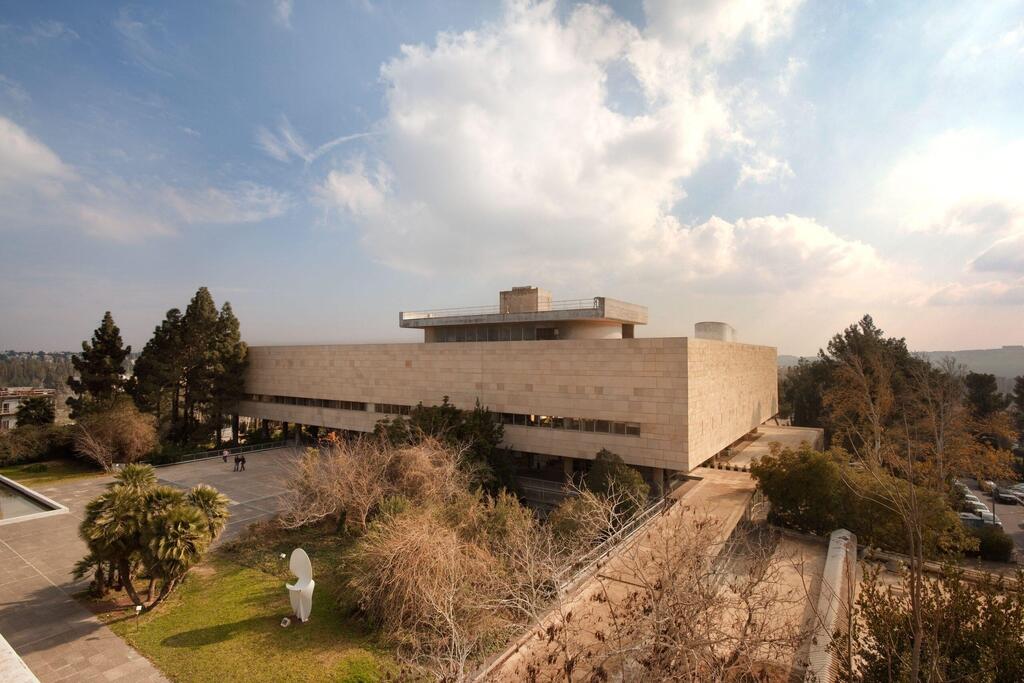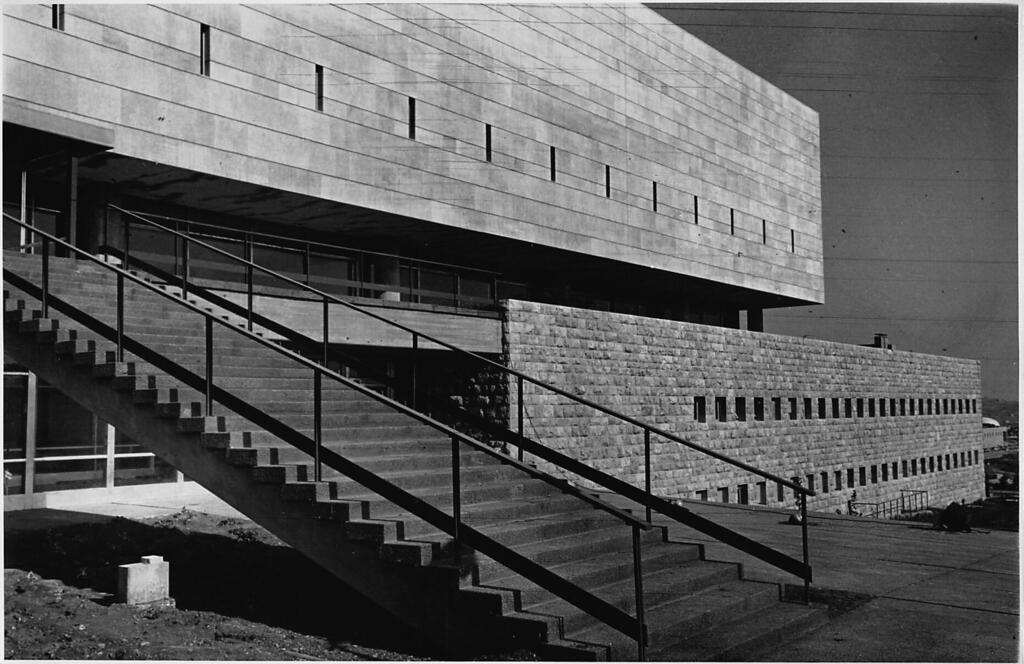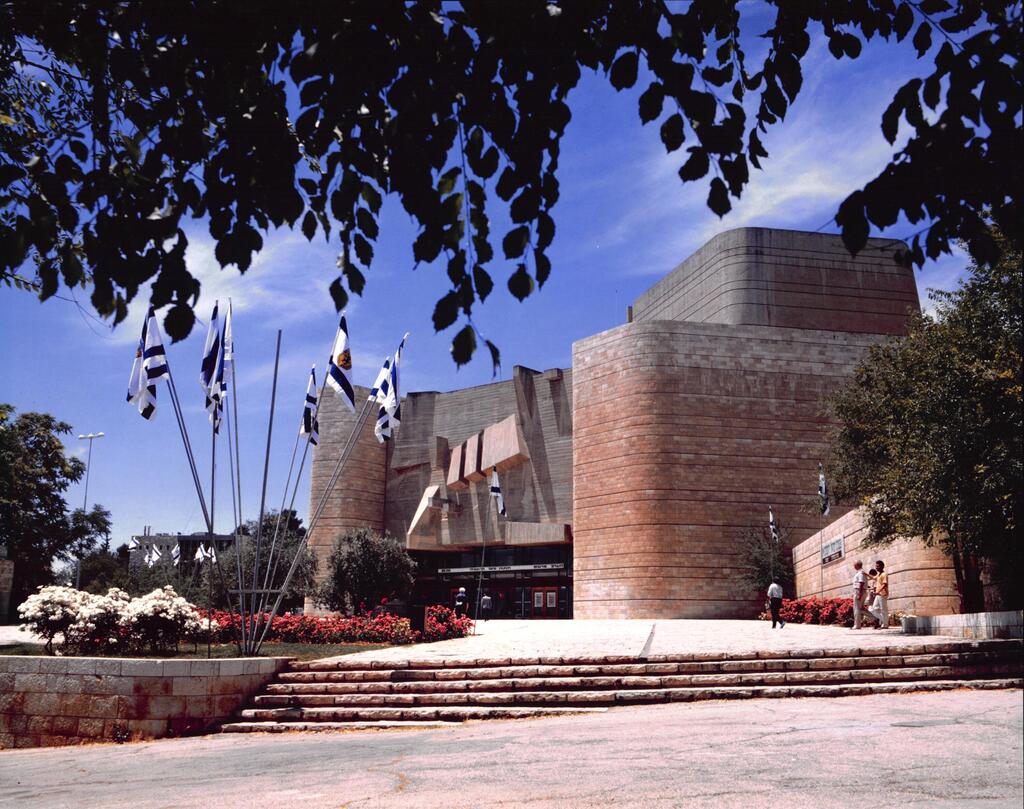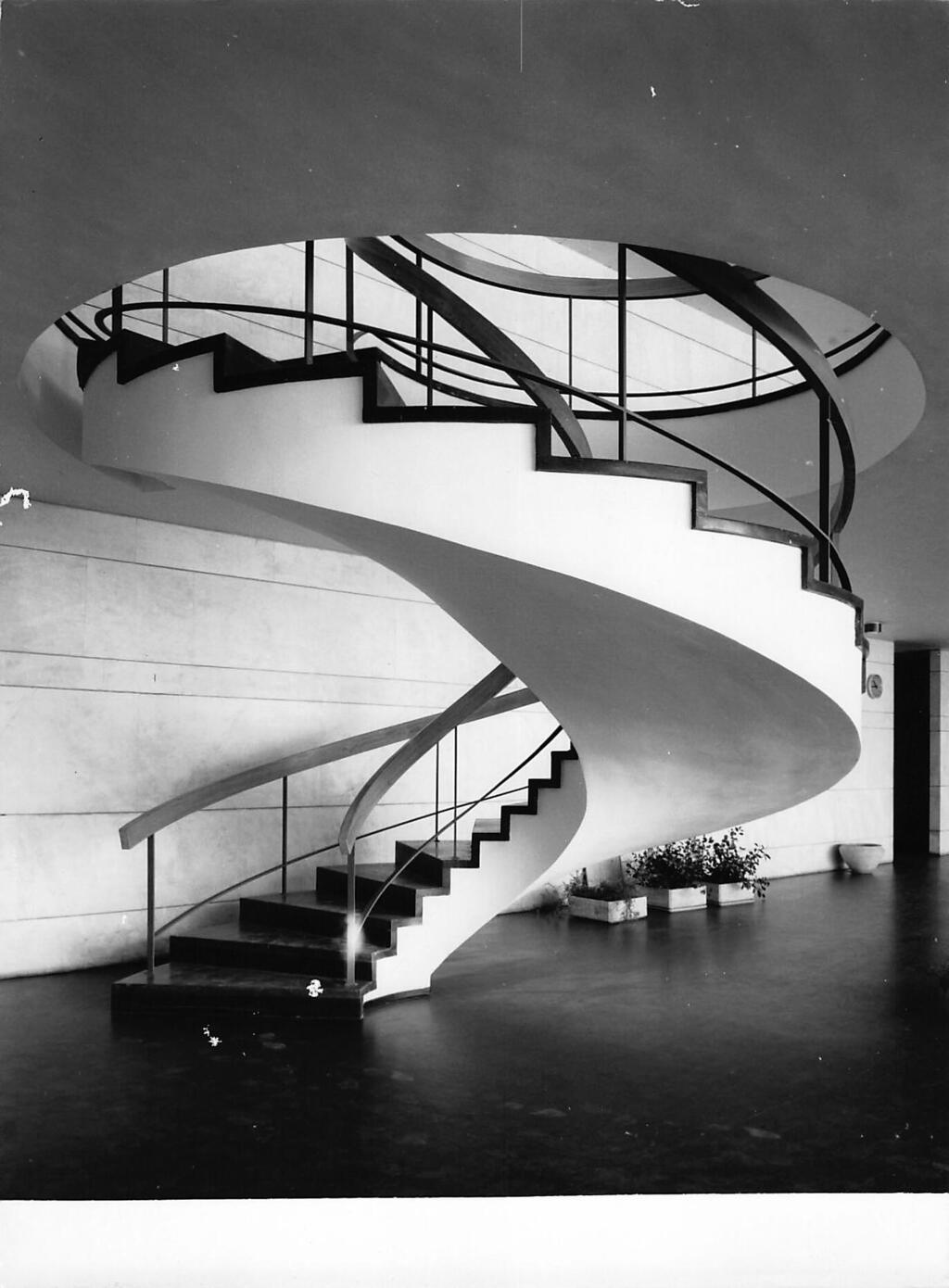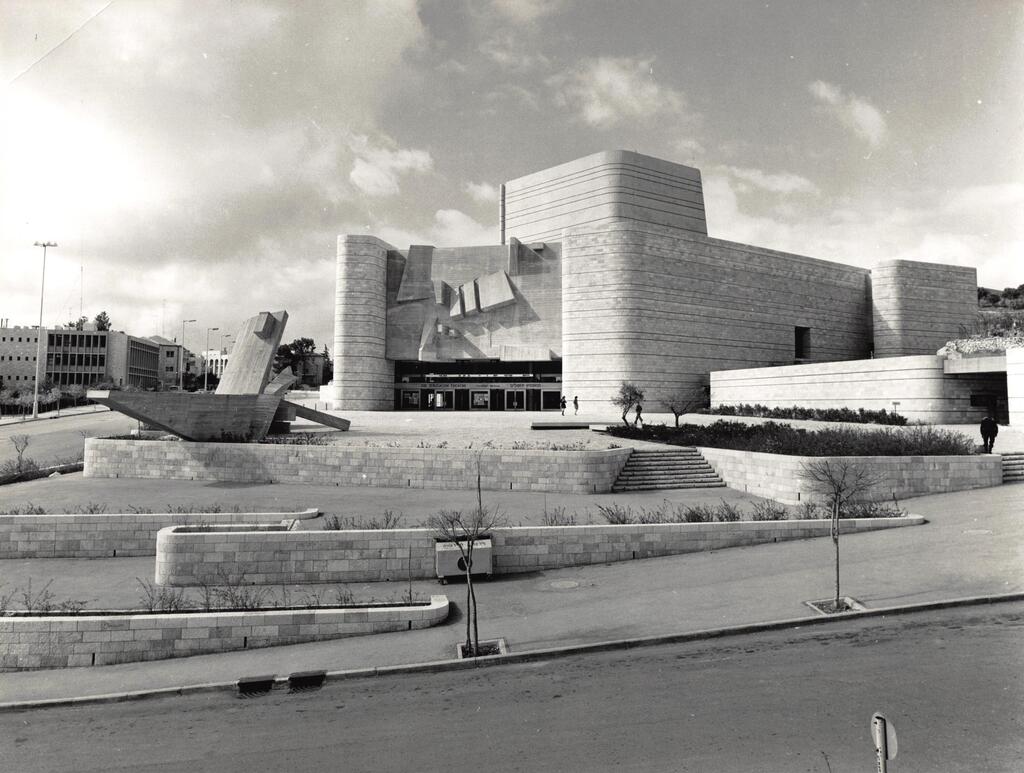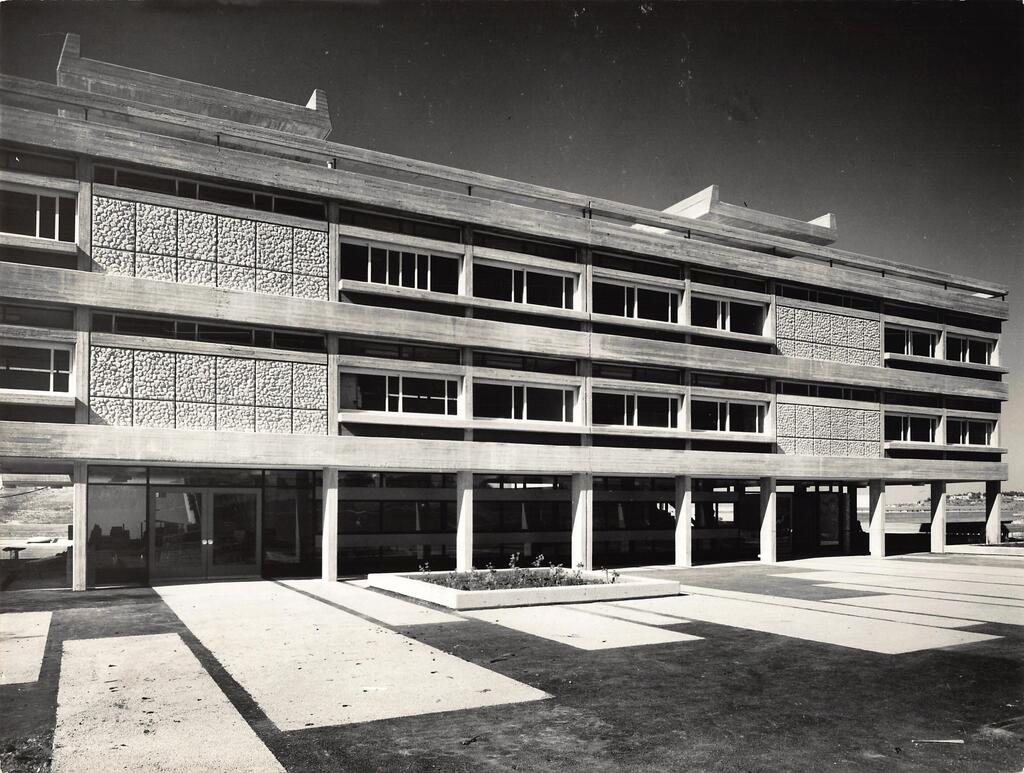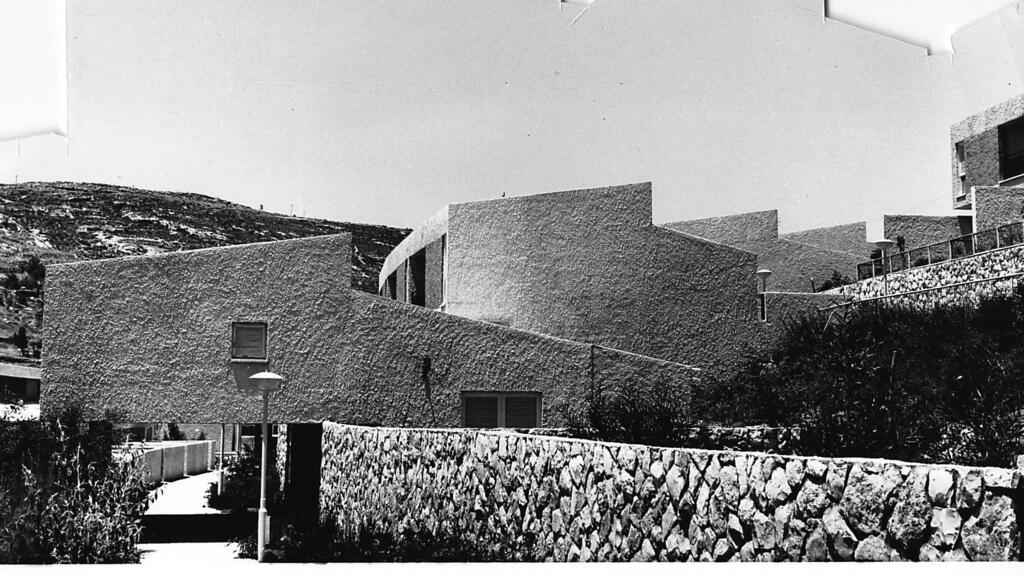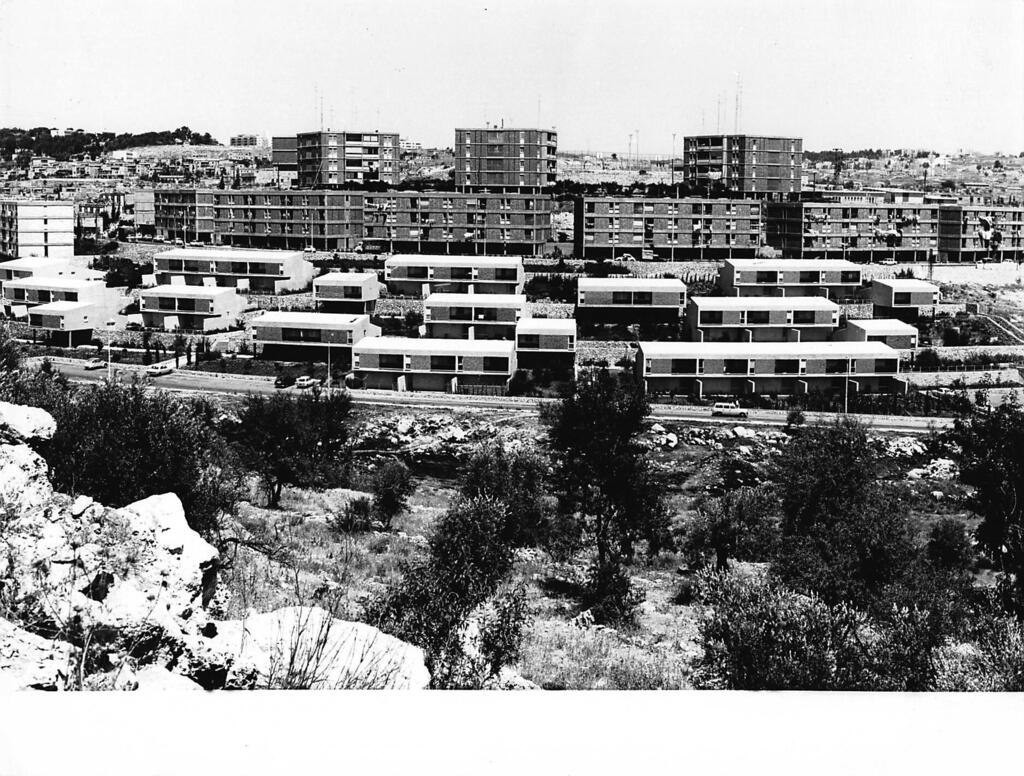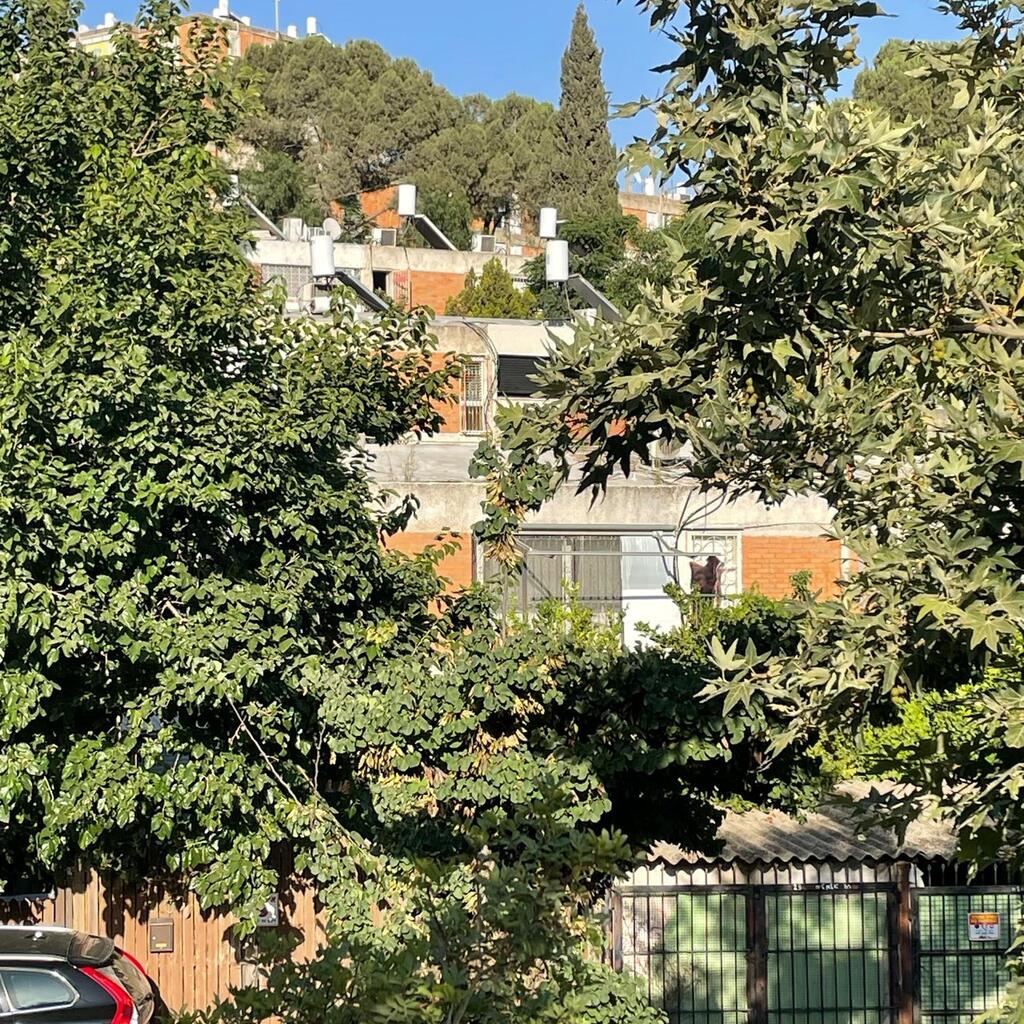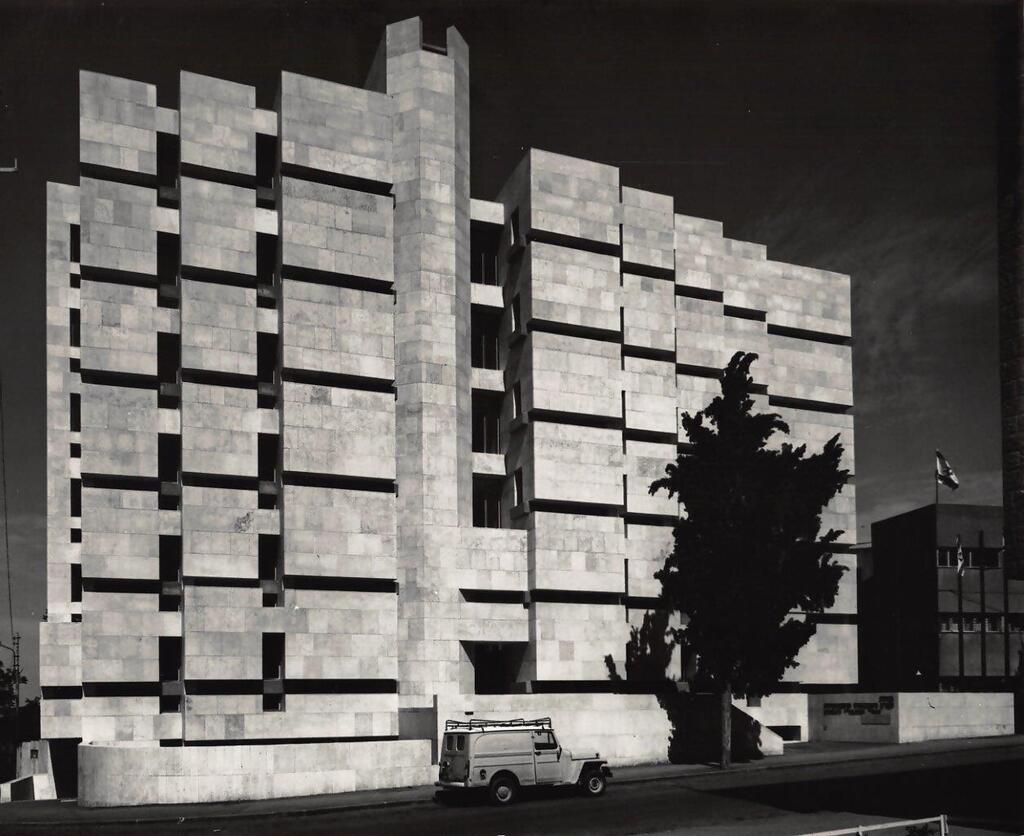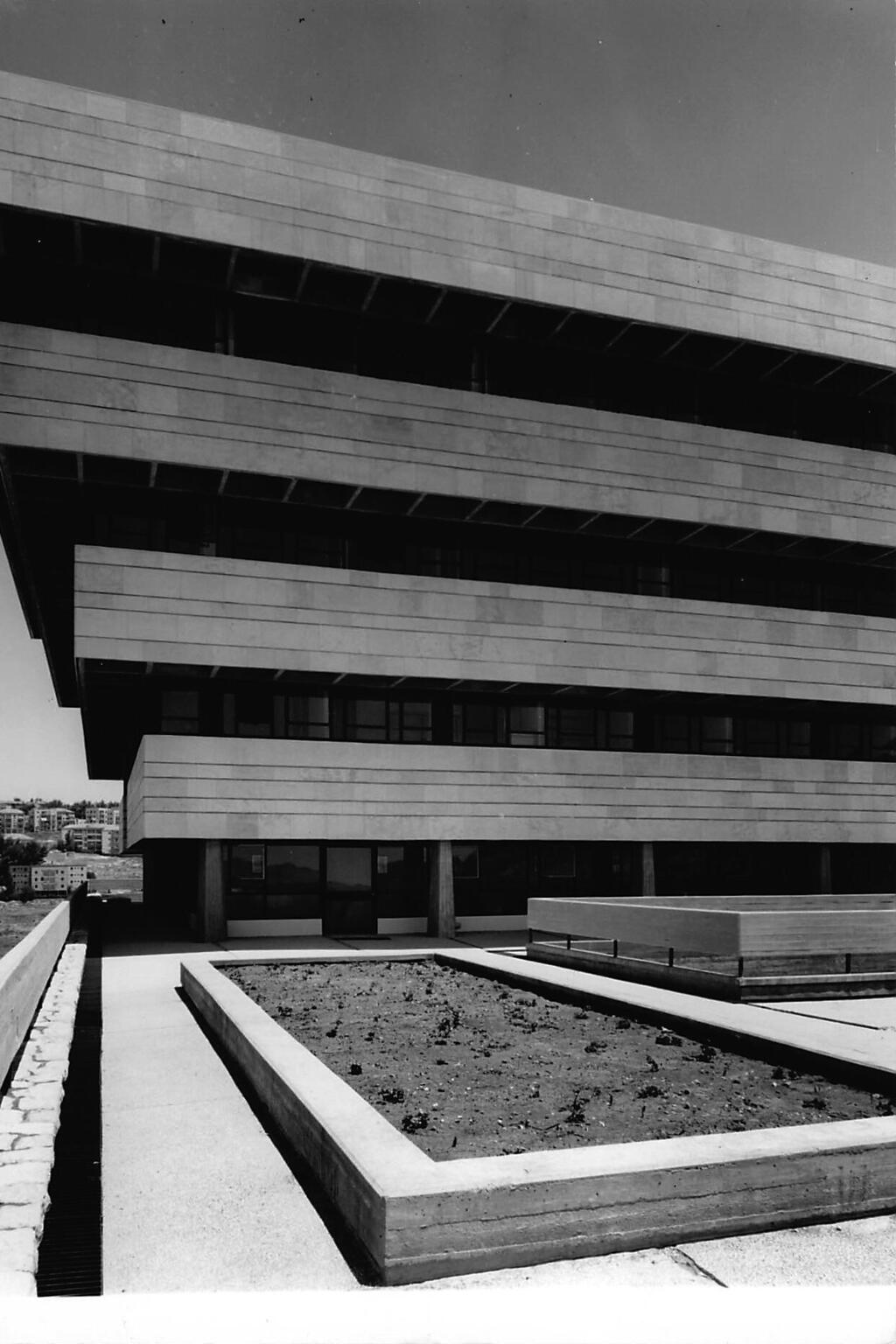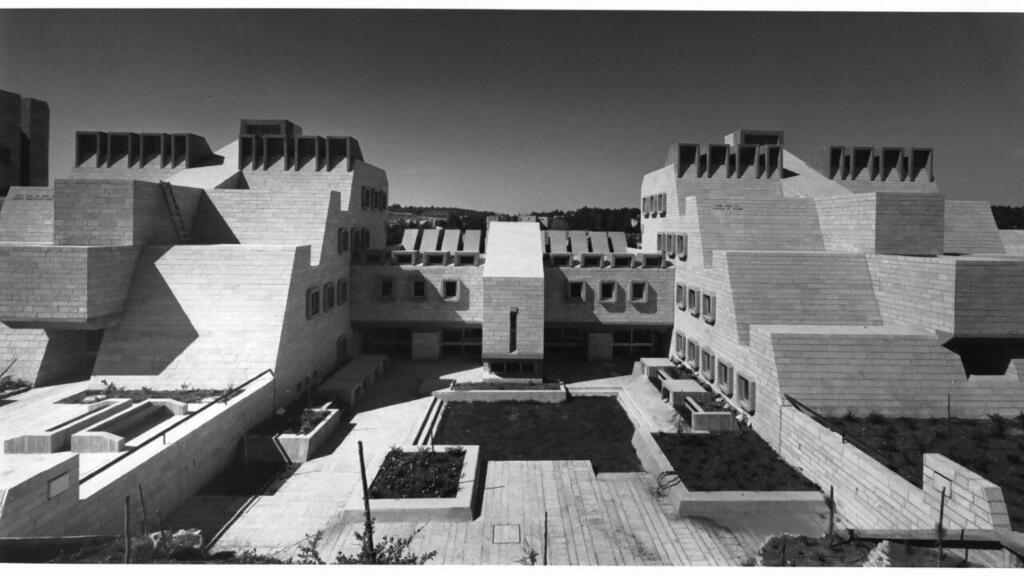Getting your Trinity Audio player ready...
Conservation efforts in Israel typically spark debates between the desire to preserve the cultural and aesthetic values of historic structures and the ambition to modernize, innovate and densify urban environments.
More stories:
With its long architectural history, Jerusalem has long been involved in multiple parallel processes and plans to merge preservation with urban renewal trends. Recently, the city's Conservation Committee approved a list of modern buildings from the 1950s and 60s designed by the architectural firm Nadler-Nadler-Bixon-Gil.
The sites in question include the National Library, Beit Giora, Beit Elisheva, Beit Yehudit, the Jerusalem Theater, ORT Harmatz College in Givat Ram, Mae Boyar High School, the Jerusalem Academy of Music and Dance, the Builders’ Insurance Fund Building, Himmelfarb Torani High School and the entire Gonen Tet residential neighborhood (yes, an entire neighborhood designated for preservation). The first five were already slated for preservation in previous plans, and now six additional buildings are joining them.
"These buildings represent the story of public-civic architecture in the State of Israel, intersecting various historical crossroads. The firm played a pivotal role in the evolution of modern representative architecture in the capital, Jerusalem, considering all the planning, social, material and topographical challenges involved. Their inclusion in the preservation list completes the overview of landmarks in the development of modern architecture in the city," according to a statement by the Jerusalem Municipality regarding the selection.
Concrete and Jerusalem stone
The projects, and most of the construction in Israel at the time, shifted from designs based on exposing the concrete skeleton to designing monoliths that seemed to be carved from concrete. The clear distinction between the supporting framework and the Jerusalem stone walls is evident in structures like the National Library and Beit Yehudit, formally known as the International Cultural Center for Youth (ICCY), both of which were designed in the mid-1950s.
In the late 1950s, with Shmuel Bixon joining the firm as a partner, the architectural style became more robust and sculptural. These projects feature the Jerusalem Theater, previously earmarked for preservation, and the ORT Harmatz College in Givat Ram, now also added to the preservation list, which draws design inspiration from the Old City's texture.
"The firm’s construction in Jerusalem is characterized by integrating the building with the surrounding topography; the structures seem as if they rise from the ground," stresses architect Sharon Dinur, head of the preservation department of the Jerusalem municipality, in her description of the buildings.
14 View gallery
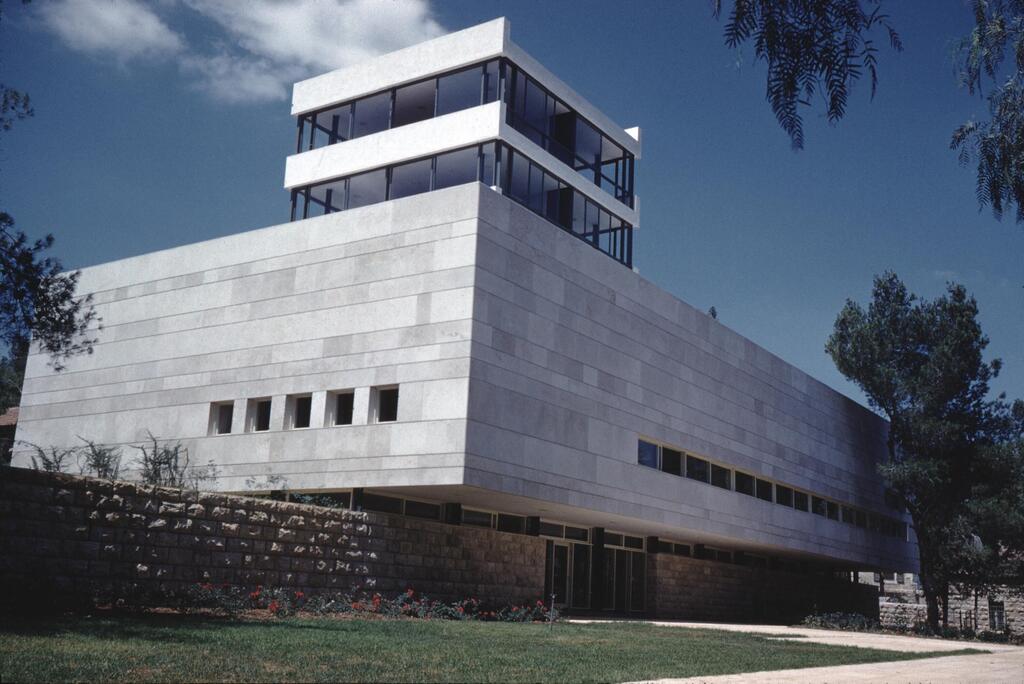

The International Cultural Center for Youth
(Photo: y.kalter, courtesy of the Nadler-Nadler-Bixon-Gil Archive)
"Preserving the buildings they designed will reveal a comprehensive planning approach that's scarcely seen today. Nadler-Nadler-Bixon-Gil oversaw every aspect of their building designs. This began with the broad scope of landscape and environment planning, extending to the building and its façades and even down to the design of furniture, lighting fixtures and textiles."
The Jerusalem Theater also showcases the architects' tendency to integrate artworks directly into their designs. On the theater's façade, an art piece by Yechiel Shemi is embedded in the exposed concrete, marking the entrance to the building.
The National Library
The architecture firm was founded in 1946 after Michael and Shulamit Nadler completed their studies at the Technion in Haifa, during which they met and married. The projects they planned are emblematic of the extensive public construction that began with the establishment of the state.
In 1955, they won a competition to design the National Library in Jerusalem, in collaboration with other architects, including the firms Ziva Armoni, Hanan Hebron, Shimon Povsner and Avraham Yaski. Since then, they have designed many public libraries throughout Israel.
In 1958, the architect Shmuel Bixon joined as a partner, and in 1970, the partnership expanded when architect Moshe Gil joined the firm. Alongside the National Library, notable projects they designed include the Be'er Sheva City Hall, the Zalman Aranne Central Library at Ben-Gurion University of the Negev and the Sourasky Central Library at Tel Aviv University.
These sites became symbols of the building of the young state and represented a blend of international movements that reached Israel in those years - Modernism and Brutalism - integrated with local values.
In 2013, the Architects House Gallery in Tel Aviv hosted an exhibition showcasing the extensive work of the architectural firm under the title "Team Work”. The exhibition catalog, curated by Michael Jacobson and Eran Tamir Tawil, read, "Over 64 years of operation, the work of the Nadler-Nadler-Bixon-Gil-Alkon firm has been at the forefront of local creation, winning countless competitions and being featured in both local and international publications."
In 2016, Michael Jacobson and Dr. Zvi Elhyani published a book titled The Architecture of Nadler-Nadler-Bixon-Gil, which compiled the firm’s projects.
"This is the story of a firm that operated for decades and shaped the architectural style in a young country, seeking an architectural character that would reflect its values. Through their designs, they articulated their answer to the question of what public architecture means in Israel and particularly in its capital, Jerusalem," Dinur describes their work.
14 View gallery
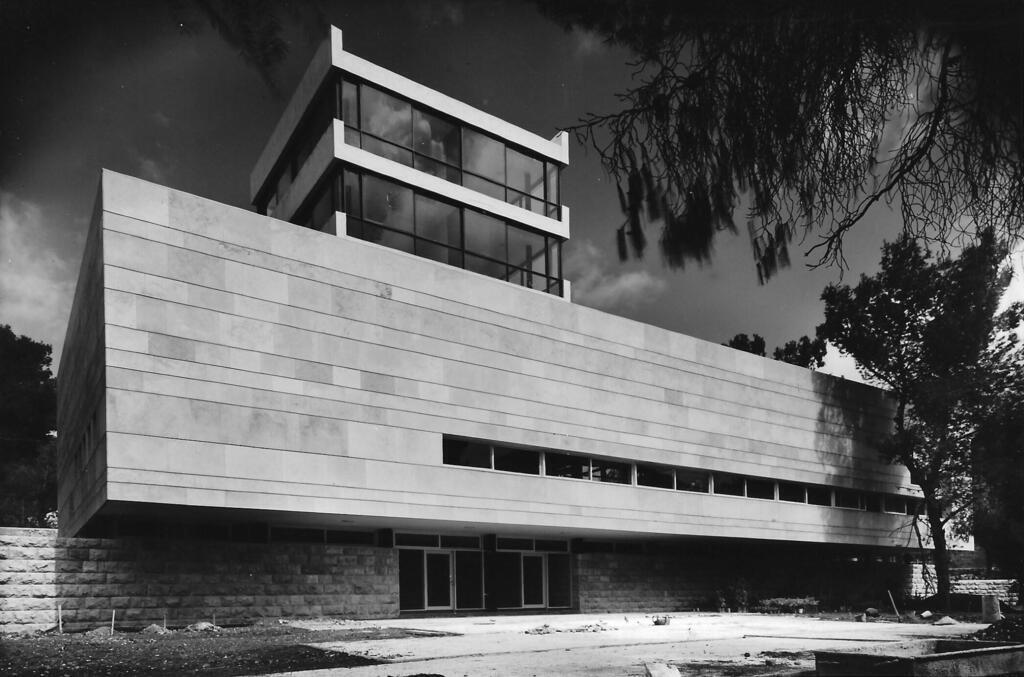

The International Cultural Center for Youth
(Photo: y.kalter, courtesy of the Nadler-Nadler-Bixon-Gil Archive)
Consequently, a tour of Jerusalem Dinur held with UNESCO focusing on the preservation of architectural heritage, along with the review by Jacobson and Elhyani in their book, led the Preservation Committee to designate for conservation the sites the firm designed in the first two decades of the young state.
The decision to include a list of 11 modern sites designed by the same firm is unprecedented. "There aren't many firms that worked and played a part in public construction in Jerusalem on such a scale," explains Dinur.
"The design language they established alongside the development of the State of Israel underscores the significance of the projects they designed as a collection. The buildings reflect the zeitgeist and the cultural shifts over the six decades they were active. At the same time, one can see a common thread running through all the buildings, highlighting the firm's architectural signature."
The only neighborhood on the list
"When we evaluate buildings for preservation in the committee, we consider their state of conservation over time," Dinur describes the Preservation Committee's work process.
"Most of the public buildings have remained largely as they were. The Builders’ Insurance Fund Building, which was added to the list, has been preserved almost identically to its original design, despite the changes in its uses over time. The design of the building's façade and its rhythmic division, creating interplays of light and shadow, are additional distinctive features of their work.
Unlike public projects, preserving residential projects typically encounters more challenges due to private ownership of the land and the desire to allow renewal and construction. Additionally, the modifications that residential buildings undergo over the years, to adapt them to changing lifestyles, often result in losing the original principles that made the building worthy of preservation in the first place," explains Dinur.
Gonen Tet was built as a public housing project in the late 1960s and is characterized by red silicate brick and concrete façades. "The uniqueness of the neighborhood stands out in an area surrounded by new construction," Dinur elaborates on the reasons for including the neighborhood on the list.
"It's a neighborhood that residents have preserved to this day and remains as it was originally designed because of the quality of life it offers. The vegetation enveloping the neighborhood and the pedestrian pathways weaving between the buildings and the varying topographical levels are just some of the reasons for preserving its community fabric.
It's important to note that the neighborhood's inclusion in the list won't prevent renewal in the area, but rather it's intended to ensure that the values embedded in it are considered when planning any construction additions."
The public is invited to suggest sites for preservation
The recently published list of sites suggests future trends in conservation. In Jerusalem, excluding the Old City, there are around 8,000 buildings deemed worthy of preservation. This is significant, especially considering that only 3,000 of them have been officially approved in previous preservation plans.
"The Jerusalem Municipality received criticism from the state comptroller and the municipality itself because most of the buildings on the preservation lists weren't approved," Dinur notes.
"Therefore, the committee meets every two weeks and discusses potential buildings for preservation. We also reached out to the public and, together with community managers across the city's neighborhoods, created a database of buildings worth preserving that haven't been reviewed yet. These days, we're touring the city's neighborhoods to pinpoint noteworthy buildings for future preservation initiatives, with an added focus on modern structures.”
She further concludes, "Up to this point, Mandate-era architecture has dominated the focus in preservation plans, sidelining the contributions of Israeli architects in the nascent state. The focus shouldn't be solely on the building's construction year but on its architectural significance. The notion that Jerusalem's historical construction halted with the state's founding in 1948 impedes the preservation of the Zionist project's values.
As a result, many structures that epitomize the impressive work of crafting the Zionist narrative and the evolution of Israeli architecture, starting immediately with the state's establishment, aren't given the attention they deserve."


